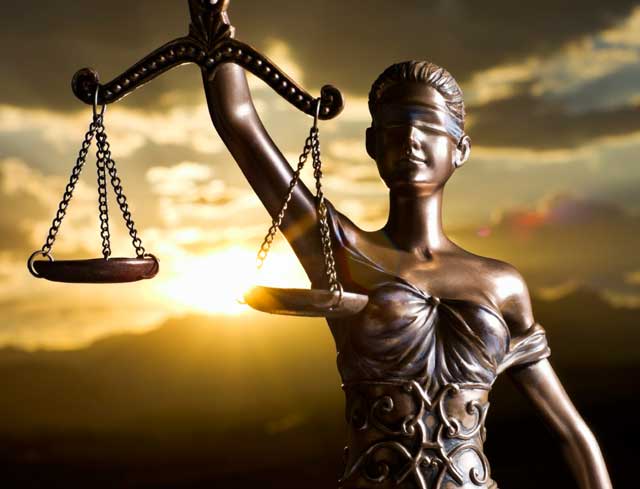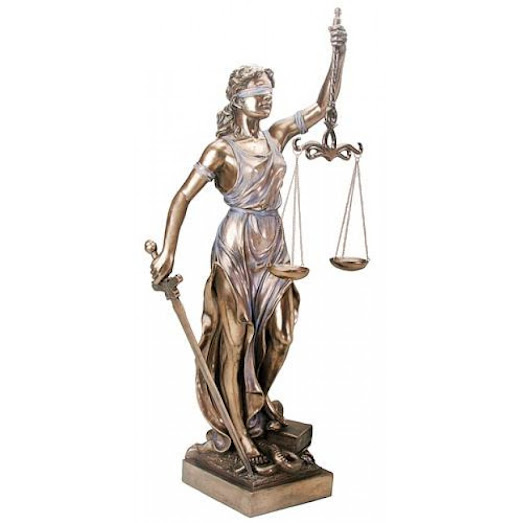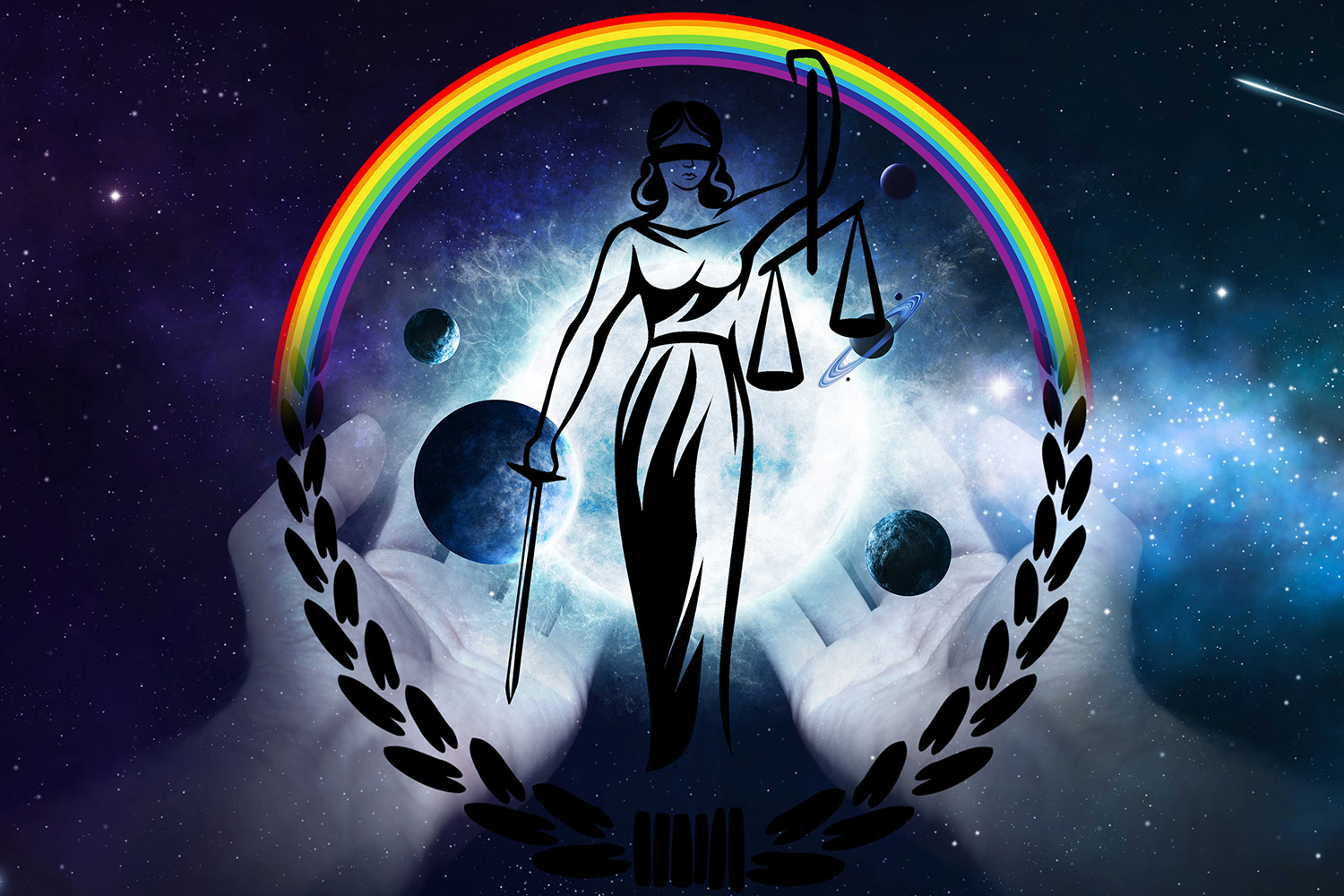Mission Statement
The Rant's mission is to offer information that is useful in business administration, economics, finance, accounting, and everyday life. The mission of the People of God is to be salt of the earth and light of the world. This people is "a most sure seed of unity, hope, and salvation for the whole human race." Its destiny "is the Kingdom of God which has been begun by God himself on earth and which must be further extended until it has been brought to perfection by him at the end of time."
Tuesday, December 31, 2019
Monday, December 30, 2019
Business Law (part 6)
Interference with a Contract or Economic Advantage
by
Charles Lamson
The tort (a civil wrong that causes a claimant to suffer loss or harm, resulting in legal liability for the person who commits the tortious act) of interference with a contract or economic advantage basically occurs when a business relationship has been formed and in some way a third-party causes one party to end that business relationship. If injured, the other party to the business relationship may have a cause of action against the party causing the breakup. This tort could also be the result of unjustified interference with a person's reasonable expectation of future economic advantage.
 |
Traditionally, proof of this tort only required showing that the defendant knowingly interfered with a business relationship. However, more and more states require that the intentional interference be improper. Improper interference can occur because of an improper motive, an improper means, or by acting other than in the legitimate exercise of the defendant's own rights. Defendants who protect their economic or safety interests or assert honest claims are not acting improperly.
In a free market economy, competitors inevitably injure one another. Courts do not hold such injury tortious, even when intentional, if the action was taken to advance a person's economic interest and results from the competitive economic system.
However, if a person justifiably interferes with another's business relationship or reasonable expectation of future economic advantage, there is a tort. Interference with leasing opportunities, with the opportunity of buying and selling goods or services, and with the hiring of employees are examples of the types of interference that can be actionable.
Confusion About a Product
A person may commit a tort by intentionally causing confusion about another's product. This could be done by making false statements about another's product or by representing goods or services as being the goods or services of someone else.

Injurious Falsehood. When a person makes false statements of fact that degrade the quality of another's goods or services, the tort of injury of false communication occurs. The false statement must be made to a third person. This is called communication. The hearer must understand the statement to refer to the plaintiff's goods or services and to degrade their quality. The injured party must also show the statement was a substantial element in causing damage. In some states the plaintiff must identify specific customers lost as a result of the statement.
Finally, the statement must have been made maliciously. Malice can always be shown by proving that the statement was made as a result of ill will, spite, or hostility with the intention of causing harm to the plaintiff. In some jurisdictions, the plaintiff need only show that the false statement was made knowing it was false or with reckless disregard as to its truth or falsity.
Confusion of Source. The tort that occurs when a person attempts to represent goods or services as being the goods or services of someone else is confusion of source. The law of assumes customers would be confused as to the source of the goods or services. Actual confusion need not be shown. This tort occurs from trademark or trade name infringement or unfair competition.
Trademarks. Federal law defines a trademark as a word, name, symbol, device, or any combination adopted and used by a person to identify and distinguish goods, including a unique product, from another's goods and to indicate the source of the goods. A trademark indicates that goods carrying that mark all come from one source. A trademark or trade name gives the owner the exclusive right to use a word or device to distinguish a product or a service.
Not all words or symbols qualify for protection as trademarks. Only those marks used by a business in a way that identifies its goods or services and differentiates them from others are entitled to protection. The mark generally must be inherently distinctive, which means the mark is unique, arbitrary, and non-descriptive.
A mark that is not so distinctive may be a trademark if it has acquired a secondary meaning. A secondary meaning is a special portrayed meaning developed by usage that distinguishes the goods or services in such a way as to warrant trademark protection. A generic term can be protected if it has acquired a secondary meaning. If the right to trademark protection is based on the doctrine of secondary meaning, the geographical area of protection will be limited to the area in which the Mark has such a secondary meaning.
Marks that are fanciful, arbitrary, or suddenly suggest something about the product can be protected. Protected marks include words such as Ivory for soap, the letters S and ECI, Abbreviations for nicknames such as Coke, made up words such as Exxon and Rolex, and the shapes of packages and products. Generic terms such as superglue and soft soap cannot be trademarks.
A trademark may be registered or unregistered. A trademark registered under the federal trademarks law provides the holder with all the rights and remedies of that law. The holder of an unregistered trademark also has some rights under the federal law and rights provided by the common law. Many states also have trademark laws, however, they vary greatly. In some states the holder of a mark may not get greater protection by registering than the common law affords an unregistered mark.
Trademark or trade name infringement is the unauthorized use or confusingly similar imitation of another person's mark or name. If the imitation is likely to cause confusion or mistake or deceive people, courts will halt use of the imitation. Courts examine a number of factors when deciding whether a likelihood of confusion between two marks exist. Although the various courts do not always use the same factors, those factors most commonly considered include:
The imitation of another's trademark is not always done to cause confusion and does not always lead to infringement. However, where the imitation is for the purpose of jest for commentary, the parody is successful only when there is no confusion and therefore no infringement.
When infringement is a tort, rather than a crime, the holder of the trademark or name has the duty of bringing any legal action to stop the alleged infringement and recover damages.
Trademarks identify and distinguish tangible goods, service marks identify and distinguish services. However, the same legal principles govern trademark infringement and service mark infringement.
The owner of a trademark is protected from unauthorized use of the trademark even when confusion might not result. Trademark or trade name dilution is "the lessening of the capacity of a famous mark to identify and distinguish goods of services." This could be done either by what is called blurring or by tarnishing a trademark. Blurring means to diminish the selling power of a trademark by unauthorized use on noncompeting products. A blurring use would occur if someone produced McDonald's light bulbs are Chrysler tires, for example. Tarnishing a trademark occurs when the mark is used in a disparaging manner or on low-quality goods. The owner of a trademark or name may get an injunction against anyone's commercial use of the trademark or name.
Unfair Competition. Unfair competition exists when the total impression a product gives to that customer results in confusion as to the origin of the product. The impression of a product includes its packaging, size, color, shape, design, wording, any decorative indicia, and name. When unfair competition is claimed, the total physical damage conveyed by the product and its name are considered together.

*SOURCE: LAW FOR BUSINESS, 15TH ED., 2005, JANET E. ASHCROFT, PGS. 24-28*
end
|
Saturday, December 28, 2019
BUSINESS LAW (PART 5)
Business Torts and Crimes
by
Charles Lamson
How do businesses relate to society and to other businesses? Can the activity of a business unfairly damage another business or even violate a criminal law? With some variations from state-to-state, courts have found some activities by businesses and some activities against businesses actionable.
 |
Torts
A tort is a private wrong or injury. The law permits people to sue for injuries caused by the intentional or negligent acts of others. The person who causes the injury is called a tortfeasor.
Intentional Torts
To recover for an intentional tort, the injured person must show three things:
Intentional torts include such actions as assault (putting a person in fear of a wrongful touching), battery (a wrongful touching), trespass (invading someone's property), and false imprisonment (improperly confining a person). Although a business could be involved in these torts, parties involved in these types of cases come from every sector of the community.
Negligence Torts
To recover for a tort based on negligence, the injured party must show:

Business Torts
The type of tort caused by a business or involving a business is a business tort. Business has become involved in a tort action in several common ways.
Product liability. Manufacturers of products incur potential liability and tort for injuries caused by the products,. A person injured through the use or condition of a product could sue on the basis of the manufacturer's negligence in the preparation or manufacture of the article. The plaintiff must go (figuratively) into the defendant's plant or factory, learn how the article was made, and prove negligence. Unless the plaintiff can show negligence in the design of the manufacturer's product or the general method of manufacture, it is unlikely the plaintiff will be able to prove negligence.
Whenever a manufacturer, as a reasonable person, should foresee that a particular class of persons would be injured by the product, the manufacturer is liable to an injured member of that class without regard to whether such member purchased from the manufacturer or from anyone else.
The difficulty of proving negligence has helped lead the courts to expand a Doctrine called strict tort liability. This doctrine makes a manufacturer liable without proof of negligence. It applies to anyone injured because of the defect in the manufacture of a product when such defect makes the use of the product dangerous to the user or persons in the vicinity of the product. The person injured or killed must be a user or person in the vicinity.

Business Activity. Several other business activities have been widely recognized as tortious. They are intentional torts and may be based on state law, federal law, or common law. While some variation exists among the states, an injured party may recover damages on the basis of conduct that causes two general types of harm:
*SOURCE: LAW FOR BUSINESS, 15TH ED., 2005, JANE E. ASHCROFT, J.D., PGS. 22-24*
end
|
Friday, December 27, 2019
BUSINESS LAW (PART 4)
Courts and Court Procedure
by
Charles Lamson
Procedure in Courts of Record
Procedural laws are laws that specify how parties are to go forward with filing civil actions and how these actions are to be tried. They must be followed if the parties wish to have the case settled by a court.
 | |||||||||||||||||||||
Filing Suit in a Civil Action
With few exceptions, courts are powerless to settle disputes between individuals unless one of the parties so requests the court. The written request, called a complaint or petition, begins a civil suit. The individual who institutes a civil action is called the plaintiff, and the individual against whom action is brought is called the defendant. The order of events in bringing an action is generally as follows:

Trial Procedure
A typical jury trial proceeds in the following order:
Appeals
If either the plaintiff or the defendant is dissatisfied with the judgment and can sight an error of law by the court, an appeal generally may be taken to a higher court. When an appeal is taken, a complete transcript to a written record of the trial is given to the appellate court. Rather than hear testimony from witnesses, the appellate court reviews the entire proceedings from the transcript. The attorney for each side files a brief, setting forth the reasons that warrant the appellate court to either affirm or reverse the judgment of the lower court. The decision of the appellate court becomes judicial precedent and is binding upon lower courts. The appellate court may, however, reverse itself in a future case, although this seldom occurs.
Procedure in Small Claims
Filing and trying a suit in an inferior court like a small claims court is a much simpler matter then filing and trying a suit in a court of record. A form for the complaint may be obtained from the court and filled out by the plaintiff without help from a lawyer. Frequently, court employees will assist in filling out the forms. The defendant is then served with the complaint.
When the case is tried, the procedure is much more informal than in a court of record. A judge tries the case, so there is no jury. Since neither party has to be represented by an attorney, and in some courts may not be so represented, the judge asks the parties to state their positions. Witnesses and evidence may be presented, but the questioning is more informal. The judge is likely to ask questions in order to assist and ascertain the facts. The judge then renders the verdict and judgment of the court. Normally, either party may appeal the judgment to a court of record, in which case the matter is retired there.
 *SOURCE: LAW FOR BUSINESS, 15TH ED., 2005, JANET F. ASHCROFT, PGS. 18-21*
end
|
Tuesday, December 24, 2019
MANAGING FOR COMPETITIVE ADVANTAGE (PART 18 - THE CONCLUSION)
Managing Change
by
Charles Lamson
Every manager needs a clear understanding of how to manage change effectively. Organizational change is managed effectively when
- The organization is moved from its current state to some planned future state that will exist after the change.
- The functioning of the organization in the future state meets expectations; that is, the change works as planned.
- The transition is accomplished without excessive cost to the organization.
- The transition is accomplished without excessive cost to the individual organizational members.
People are the key to successful change. For an organization to be great, or even just to survive, people have to care about its fate, and know how they can contribute. But typically, leadership lies with only a few people at the top. Too few take on the burden of change; the number of people who care deeply, and who make innovative contributions, is too small. People throughout the organization need to take a greater interest and a more active role in helping the business as a whole. They have to believe they can make a difference. And they have to identify with the entire organization, not just with their unit and close colleagues.
These important attitudes and feelings are not unusual in startups and very small organizations. Too often they are lost with growth and over time. In large, traditional corporations, they are all too rare. There needs to be a permanent rekindling of individual creativity and responsibility, a true change in the behavior of people throughout the organization. The essential task is to motivate people fully to keep changing in response to new business challenges.
Motivating People to Change
People must be motivated to change. But often they resist changing. For example, if your boss were to tell you, we have to become world-class, what would be your reaction?
Many people settle for mediocrity rather than aspire to world-class status. They resist the idea of striving mightily for excellence. They say things such as the following:

To deal with such reactions, and successfully implement positive change, it is important to understand why people often resist change. Some reasons are general and arise in most change efforts. Other reasons for resistance relate to the specific nature of a particular change.
General Reasons for Resistance Several reasons for resistance arise regardless of the actual content of the change.
Change-Specific Reasons for Resistance Other causes of resistance arise from the specific nature of a proposed change. Change-specific reasons for resistance include:

What could people fear to lose? At worst, their jobs, if management is considering closing down a plant. A merger or reorganization, or technological change, could create the same fear. Despite assurances that no one will be laid off or fired, people might fear a cut in pay or loss of power and status under the new arrangement.
It is important to recognize that employees assessments can be more accurate than management's; they may know what change will not work even if management doesn't. In this case, resistance to change is beneficial for the organization. Thus, even though management typically considers resistance a challenge to be overcome, it may actually represent an important signal that a proposed challenge requires further, more open-minded scrutiny.
A General Model for Managing Resistance Motivating people to change often requires three basic strategies: unfreezing, moving to institute the change, and refreezing.
In the unfreezing stage, management realizes that its current practices are no longer appropriate and the company must break out of (unfreeze) its present mold by doing things differently. People must come to recognize that some of the past ways of thinking, feeling, and doing things are obsolete. Perhaps the most effective way to do this is to communicate to people the negative consequences of the old ways by comparing the organization’s performance to its competitors. Management can share with employees data about costs, quality, and profits. However, care must be taken not to arouse people’s defensiveness by pinning the blame directly and entirely on them.
An important contributor to unfreezing is the recognition of a performance gap, which can be a precipitator of major change. A performance gap is the difference between actual performance and the performance that should or could exist. A gap typically implies poor performance; for example, sales, profits, stock price, or other financial indicators are down. This situation attracts management’s attention, and management introduces changes to try to correct things.
Another, very important form of performance gap can exist. This type of gap can occur when performance is good but someone realizes that it could be better. Thus, the gap is between what is and what could be. This is where entrepreneurs seize opportunities and where companies that engage in strategic maneuvering gain a competitive edge. Whereas many change efforts begin with the negative, it often is more valuable to identify strengths and potential and then develop new modes of operating from that positive perspective.
As an impetus for change, a performance gap can apply to the organization as a whole; it also can apply to departments, groups, and individuals. If a department or work group is not performing as well as others in the company, or if it sees an opportunity that it can exploit, that unit will be motivated to change. Similarly, an individual may receive negative performance feedback or see a personal opportunity on which to capitalize. Under these circumstances, unfreezing begins, and people can be more motivated to change than they are if no such gap exists.
Moving to institute the change begins with establishing a vision of where the company is heading. The vision can be realized through strategic, structural, cultural, and individual change. Cultural changes are institutionalized through effective leadership. Individuals will change as new people join the company and as people throughout the organization adopt the leader's new vision for the future.
Finally, refreezing means strengthening the new behaviors that support the change. Changes must be diffused and stabilized throughout the company. Refreezing involves implementing control systems that support the change, applying corrective action when necessary, and reinforcing behaviors and performance that support the agenda. Management should consistently support and reward all evidence of movement in the right direction.
In today's organizations, refreezing is not always the best third step, if it creates new behaviors that are as rigid as the old ones. The ideal new culture is one of continuous change. Refreezing is appropriate when it permanently instills behaviors that maintain central core values, such as a focus on important business results and those values maintained by the companies that are built to last. But refreezing should not create new rigidities that might become dysfunctional as the business environment continues to change. The behaviors that should be refrozen are those that promote continued adaptability, flexibility, experimentation, assessment of results, and continuous improvement. In other words, lock in key values, capabilities, and strategic mjssion, but not necessarily specific management practices and procedures.
Specific Approaches to Enlist Cooperation You can try to command people to change, but the key to long-term success is to use other approaches. Developing true support is better than driving a program forward. How, specifically, can management motivate people to change? Most managers underestimate the variety of ways they can influence people during a change. Several effective approaches to managing resistance and enlisting cooperation are available.
Each approach to managing resistance has advantages and drawbacks and, like many of the other situational and contingency management approaches, each is useful in different situations. Managers should not use just one or two general approaches, regardless of the circumstances. Effective change managers are familiar with the various approaches and know how to apply them according to the situation.

Throughout the process, change leaders need to build in stability. In the midst of change, turmoil, and uncertainty, people need anchors on to which they can latch. This means keeping some things constant and visible, such as the organization's values and mission. In addition, strategic principles can be important anchors during change. It can help further to maintain the visibility of key people, continue key assignments and projects, and make announcements about which organizational components will not change. Such anchors will reduce anxiety and help overcome resistance.
*SOURCE: MANAGEMENT: THE NEW COMPETITIVE LANDSCAPE, 6TH ED., 2004, THOMAS S. BATEMAN & SCOTT A. SNELL, PGS. 556-562*
END
|
Subscribe to:
Posts (Atom)
Do I allow my love for the Eucharist to flow into my daily life?
Key Points This is a personal and reflective question, so only you can truly answer it based on your own practices and feelings. It seems l...

-
INTRODUCING CHANGE by Charles Lamson What elements influence others to buy into an idea or product? Researchers and practitioners ask t...
-
1 Peter 2:24 : "He himself bore our sins in his body on the cross, so that we might die to sins and live for righteousness; 'by hi...